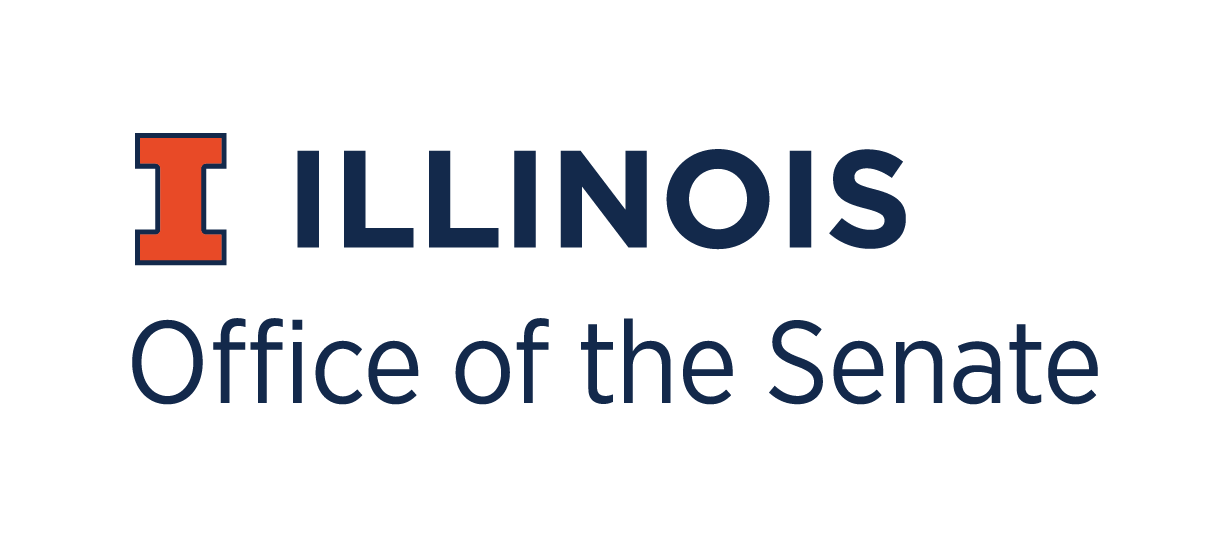HE.05.08
March 28, 2005
University of Illinois
Urbana-Champaign Senate
Final;Information
HE.05.08 Report on the Illinois Board of Higher Education Meeting, February 1, 2005.
The BHE met from 9:00 to 11:45 a.m. at the University of Illinois-Springfield. New procedures instituted this year mean that future meetings will be held in Springfield, Champaign-Urbana or Chicago rather than rotating among state campuses. A UIS fact sheet distributed had a fall ’04 enrollment of 4,396 students (41% full-time and 43% in graduate programs), 169 full and 105 part-time faculty and 509 staff offering more than 100 online courses and several online degrees.
Chair James Kaplan introduced U of I President Joe White. In a humorous vein White commented he had no basketball tickets but appreciated all his friends seeking them. He expressed his pleasure in serving at a great university, noted the “transformative power” of education and said he looked forward to working with others on behalf of higher education. Kaplan commented on the budget recommendations and the report on textbook costs saying the BHE would revisit that item due to the Governor’s continued interest.
Interim Executive Director Lamont said that workforce development was the major emphasis at the recent meeting of the Midwest Higher Education Compact. Legislatures in Ohio and Michigan are recognizing the link of higher education and economic wellbeing and a concern to strengthen the high school curriculum for everyone, not just the college-bound. A new auto plant opening in Michigan requires a 4-year degree of its workers. We need to strengthen our connection to public elementary and secondary education: K-12 has dominated the discussion about education. Higher ed needs to do a better job of talking about our role in K-12 and focus on K-16 as the key in education. Dan Layzell, an Associate Director who worked on budget as well as other issues, is leaving the BHE. Sharon Ward will perform his duties during a search.
Faculty Advisory Council Chair Allan Karnes expressed concern about the turnover of senior staff at BHE. He stressed that the current budget problems are largely due to previous legislative failures to properly fund pensions and termed the recommendations of the pension commission to reduce pensions and raise costs “unacceptable.” He expressed concern about the budget reductions for higher ed in that only one state, West Virginia, exceeded the cuts by Illinois. The state needs to revise its basic revenue structure, e.g., sales taxes do not apply to services. Why tax food and not haircuts? Terming the property tax a disaster, he called for expansion of HB 750 to cover higher education since it made no sense to fix only one part of the educational system.
Other advisory groups made brief presentations. The student group sees rising textbook prices as an alarming issue that we must continue to investigate. The proprietary institutions commented on the importance of workforce development and “meeting students where they are” in terms of academic preparation. The community colleges noted the growing proportion of low-income students in elementary and high schools. The private colleges endorsed the increase in the Monetary Award Program (MAP) but said it was still underfunded by $120M. They called for a 3 to 5 years funding strategy. They are concerned that students will leave the state and not return. Further, the 50% reduction in matching grants for research and contracts is a bad choice since we get a $15 to $1 return on the matching grants.
The BHE ’06 budget recommendations were adopted. Budget priorities: to improve affordability, enhance faculty/staff support; protect investment in facilities, continue to stress access and diversity. The budget reallocates $30M. It requests $2.43B, a .9% increase in General Revenue Funds (GRF) excluding increased pension funding of $55M (20.1%). The budget total is $8.22B when all sources (tuition) included, 3.8% over ’05. Increases: MAP $18.7M (5.5%) ($22.4M when federal funds added); $15M for personal services at public universities; $10M for community colleges and $15M for city colleges due to changes in equalization formula; $3.2M for adult and disadvantaged education; $1.6M to operate the University Center in Lake County. Cuts: $5.4M for merit recognition scholarships and $4.8M for matching research grants.
Capital recommendations were $349.9 with priority one remodeling totaling $40M. Lincoln Hall remodeling--only UIUC project--, was 5th on the priority list at $51.7M There was no new capital budget in FY’05.
Larry Isaak, President, described the Midwestern Higher Education Compact, founded in 1991, one of four such regional compacts. (Others much older.) Its goals are cost savings, student access, and policy and issue analysis. Illinois is one of two neighboring states projected to have an increase in high school graduates in the next ten years. We have a greater percentage of adults without high school diplomas. We are no longer a leader in financial aid with tuition rates rising rapidly. Other states are doing more to support higher education.
The report on textbooks showed very different costs in implementing textbook rental programs, especially costly for the research institutions. The Board will continue to focus on the issue.
The subcommittee focused on cutting the burden of reporting is drafting a report and will develop recommendations by August. An October conference is planned to discuss what the public expects from the system of higher education. The utilities subcommittee is planing a March or April Conference for facilities managers and finance people on saving utility costs.
Ken Andersen
UIUCFAC Senate Representative
